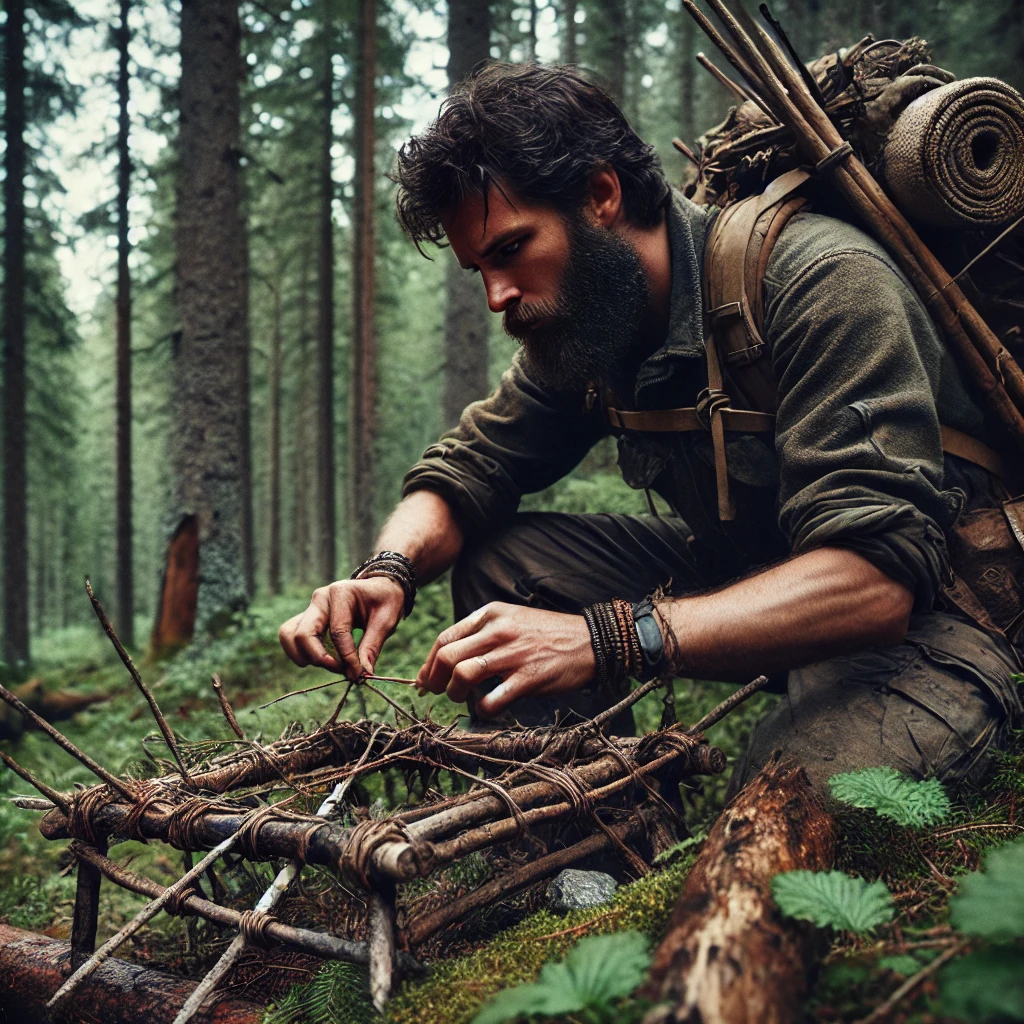A Man’s Guide to Catching Food in the Wild
The Ancient Skill of Trapping – Picture this: You’re deep in the wilderness, miles from civilization, and your stomach is growling. You’ve got no fishing rod, no rifle, and no snacks left in your pack. What do you do? This is where the ancient skill of trapping comes in. For thousands of years, humans have relied on traps to catch food, secure resources, and survive in the harshest environments. From the Inuit of the Arctic to the tribes of the Amazon, trapping has been a cornerstone of survival.
In today’s world, trapping or trap setting is more than just a survival skill—it’s a way to reconnect with our primal roots, sharpen your problem-solving abilities, and prepare for the unexpected. In this article, we’ll explore the history of trapping, share practical tips to get started, and show you why this skill is still relevant today. Let’s dive in.
The History of Trapping: From Survival to Trade
Trapping is one of humanity’s oldest skills, dating back to prehistoric times. Early humans used simple snares and deadfalls to catch small game, ensuring their survival in a world without supermarkets or fast food. Over time, trapping evolved into a sophisticated practice, with different cultures developing unique techniques and tools.
In North America, trapping played a pivotal role in the fur trade during the 17th and 18th centuries. Trappers, known as mountain men, ventured into uncharted territories to harvest beaver pelts, which were highly prized in Europe. This era shaped the continent’s history and cemented trapping as a vital skill for survival and commerce.
Today, trapping is still used by survivalists, hunters, and even wildlife researchers. It’s a skill that combines ingenuity, patience, and a deep understanding of animal behavior.
Why Learn How to Become a Skilled Trapper?
In a world of convenience, why bother learning an ancient skill like trapping? Here are a few reasons:
- Survival: If you ever find yourself in a survival situation, trap setting can mean the difference between eating and going hungry.
- Self-Reliance: Trap setting teaches you to rely on your skills and knowledge rather than modern tools.
- Connection to Nature: It’s a way to engage with the natural world and understand animal behavior.
- Practical Skill: Whether you’re a hunter, prepper, or outdoor enthusiast, trap setting is a valuable addition to your skill set.
How to Get Started: The Basics of Trapping
Ready to learn this ancient skill? Here’s a step-by-step guide to help you get started:
1. Understand Local Laws and Ethics
Before setting any traps, it’s crucial to understand the laws and regulations in your area. Trapping is heavily regulated to protect wildlife populations and ensure ethical practices. Always prioritize humane methods and respect the environment.
Pro Tip: Check with your local wildlife agency for trapping regulations and required permits.
2. Learn Animal Behavior
Being a successful trapper starts with understanding your target. Study the habits, tracks, and feeding patterns of the animals in your area. For example:
- Rabbits: Often found near brush piles or dense vegetation.
- Squirrels: Look for them in trees, especially near nut-bearing species.
- Birds: Often forage on the ground for seeds and insects.
Pro Tip: Spend time observing animals in their natural habitat to learn their routines.
3. Choose the Right Trap
There are countless types of traps, but here are three of the most common and effective:
- Snares: A simple loop of wire or cord that tightens around an animal as it passes through. Ideal for small game like rabbits.
- Deadfalls: A heavy object (like a rock or log) that falls on the animal when triggered. Effective for rodents and small mammals.
- Figure-4 Trap: A stick-and-weight trap that uses tension to hold the animal in place. Great for beginners.
Pro Tip: Practice building traps at home before using them in the wild. This will help you refine your technique.
4. Set Your Trap in the Right Location
Location is everything to aspiring trappers. Look for signs of animal activity, such as:
- Tracks or droppings.
- Chewed vegetation or bark.
- Nests or burrows.
Place your trap along game trails, near water sources, or in areas where animals feed.
Pro Tip: Use natural materials to camouflage your trap and reduce the animal’s suspicion.
5. Check Your Traps Regularly
Being an ethical trapper requires you to check your traps frequently. This ensures that any caught animals are dealt with humanely and minimizes suffering.
Pro Tip: Set a schedule for checking your traps, ideally every few hours.
Practical Tips for Aspiring Trappers
- Start Small: Begin with simple traps like snares or figure-4 traps before moving on to more complex designs.
- Be Patient: This skill requires time and persistence. Don’t get discouraged if you don’t catch anything right away.
- Practice Leave-No-Trace Principles: Minimize your impact on the environment by using natural materials and cleaning up after yourself.
- Learn from Experts: Consider taking a trapping course or joining a local trapping community to learn from experienced trappers.
The Science of Trapping

Trapping isn’t just about setting a trap and waiting—it’s a science that involves understanding animal behavior, physics, and environmental factors. For example:
- A study published in the Journal of Wildlife Management found that trap placement and bait selection significantly impact trapping success.
- According to the National Trappers Association, modern trapping techniques are designed to be humane and sustainable.
For more on the science of trapping, check out this article from the National Trappers Association.
Why Trapping Still Matters Today
In our modern world, trapping might seem like a relic of the past, but it’s a skill that remains relevant. Whether you’re a survivalist preparing for the unexpected, a hunter looking to diversify your skills, or simply someone who wants to connect with nature, trapping offers a unique and rewarding challenge.
Final Thoughts: Embrace the Challenge
Being a trapper is more than just a survival skill—it’s a way to test your ingenuity, patience, and resourcefulness. It’s about understanding the natural world and learning to work with it, rather than against it. So, the next time you’re out in the wild, take a moment to appreciate the ancient art of trapping. Who knows? You might just catch your next meal.
Try the Ancient Skills of Trappers
Have you ever tried trap setting? What’s the most challenging or rewarding part of the process for you? Share your experiences in the comments below, and let’s inspire each other to embrace this ancient skill.




